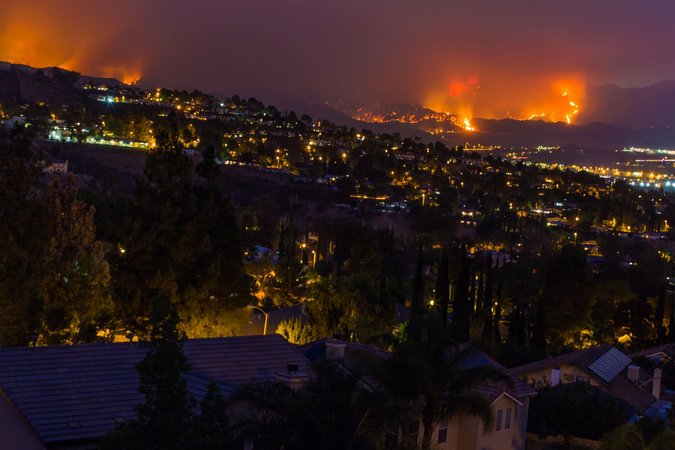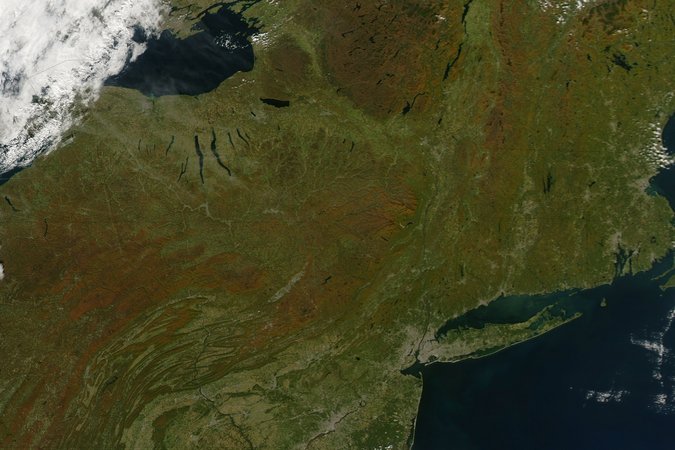New Study Identifies Costs of Wildfire Fuel Treatment in California
💡What’s the story?
Due to more than a century of forest management focused on suppressing fires, some western forests, including many in California, have accumulated historically atypical quantities of vegetation. Letting these organic materials build up over time makes fires larger and more intense. Removing excess vegetation is the primary strategy for reducing wildfire hazard in the West.
There is little research on how much reducing flammable materials in forests through prescribed burns and mechanical thinning will cost states and the federal government. A new paper by researchers at Resources for the Future (RFF) is the first to estimate how much various levels of fire-mitigation efforts could cost in California.
The team finds that fully treating California forests would cost between $225 and $375 million per year for the least expensive option, and between $1.1 billion and $1.8 billion per year for the most expensive option. Proximity to populated areas, as well as vegetation type and topography, significantly influence per-acre treatment costs.
Expert Perspective
“Overstocked forests are in some cases literally adding fuel to the fire. Investments in restoring forests and removing excess flammable materials could be a significant piece of the puzzle to reduce the threat of wildfire in California and elsewhere. Confronting this challenge is imperative, and it’s important for policymakers to understand what the various policy options on the table could cost.”
— Matthew Wibbenmeyer, RFF Fellow and coauthor
📊 How do we know?
The RFF team used data from the US Forest Service to analyze costs of prescribed burning, which entails the use of low-intensity fires managed by professionals; and of mechanical thinning, which involves removing trees, brush, and vegetation with machines and hand tools.
Using a data set of 7,975 observations of US Forest Service treatments across California, the team created a framework to estimate which type of treatment would work best in a given area and how much the treatment costs would be. The framework also gives a sense of how different factors, such as proximity to people or how hilly a landscape is, influence these costs. The team then used the framework to predict the costs of fuel treatments across federal, state, and private forests in California.
🔥 How do treatment plans compare?
The authors analyzed five scenarios that could help protect lives, homes, and businesses in California. For each of these scenarios, the authors analyzed how much the treatment plan would cost and how many acres forest managers would need to treat.
The key results are as follows:
- Treating areas with high wildfire-hazard potential is projected to cost $9.7 billion and require treating 17 million acres.
- Treating areas with high wildfire potential that are also within 1.5 miles of populated areas is estimated to cost $5 billion and require treating 8.7 million acres.
- A hybrid scenario, which includes treating all areas with moderate wildfire-hazard potential near populated areas and high wildfire potential hazard elsewhere, would require treating 30.7 million acres at an estimated cost of $16.8 billion.
- Treating areas with moderate or high wildfire-hazard potential areas requires treatment of 45.4 million acres at a cost of $24 billion.
- Treating land with at least a moderate wildfire hazard near people would cost $12.1 billion to treat 21.5 million acres.
Costs and Treatment Size for Analyzed Fuel Treatment Options

The analysis shows that costs are larger at high elevations and in areas near population centers. Costs for prescribed burns appear to be highest near heavily populated areas in southern California and the Bay Area.
For mechanical thinning, per-acre costs are highest near the Pacific coast in northern California and in parts of the Sierra Nevada and San Bernardino mountain ranges. Costs are lowest in northeastern California and in the southern California desert. Differences in cost appear to be driven mainly by differences in an area’s steepness, distances to populated areas and roads, and the density of the forest canopy.
Expert Perspective
“Reducing the severity of wildfires—the likes of which we recently witnessed in Los Angeles—is possible with the right mix of management actions. Understanding the cost of such actions is crucial. RFF’s recent study brings us closer to our goal of creating more resilient conditions to reduce the impact of wildfires for people and nature.”
—Eric Holst, Associate Vice President of Forests at Environmental Defense Fund
💵 What are the funding implications?
Assuming an overhead rate of 50 percent for planning and oversight, and assuming that treating just 30–50 percent of the landscape would be sufficient to reduce risk, the total budget burden to treat high-risk land near populated areas over 10 years (the least expensive option) would be $225–$375 million per year. Treating land with at least a moderate wildfire-hazard potential—the most expensive option—would cost approximately $1.1–$1.8 billion per year over 10 years.
Based on these cost projections, the authors find that current levels of state and federal funding may be sufficient to treat the lowest-cost option over 10 years. Implementing the most ambitious fuel-treatment option within the state would require a 100–200 percent increase in annual federal and state spending on fuel treatments.
The authors note that the costs outlined above may be underestimated, as they do not fully capture additional treatment costs that may arise on private or state lands. They also do not account for permitting or environmental review costs, which are significant components to treatment costs.
📚 Where can I learn more?
Read the paper, “The Costs of Achieving Forest Resilience in California,” by RFF Senior Nonresident Fellow and Land Use, Forestry, and Agriculture Program Director David Wear; RFF Fellow Matthew Wibbenmeyer; and RFF Senior Research Associate Yuqi Zhu. This work was supported by Environmental Defense Fund.
Resources for the Future (RFF) is an independent, nonprofit research institution in Washington, DC. Its mission is to improve environmental, energy, and natural resource decisions through impartial economic research and policy engagement. RFF is committed to being the most widely trusted source of research insights and policy solutions leading to a healthy environment and a thriving economy.
Unless otherwise stated, the views expressed here are those of the individual authors and may differ from those of other RFF experts, its officers, or its directors. RFF does not take positions on specific legislative proposals.
For more information, please see our media resources page or contact Media Relations and Communications Manager Annie Tastet.





